SUGGESTION
Reducing some of the objects or addition their smaller versions will positively affect the servers work and will allow players to move some of the gameplay from collecting and building to other elements of the game (combat, exploration, dungeons, community).
INTRODUCTION 
The topic was created for the sake of players who don’t have much time to play, don’t like large buildings or have a problem with placing a large object next to their building.
Note: I put (at the end) specific calculations and visualizations in the subject.
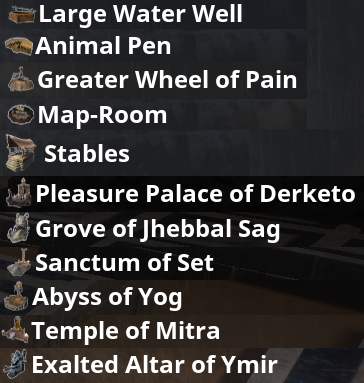
The objects from the picture above are necessary to experience the full content of the game. However, these objects take up much more space than other. This forces players to create very large buildings that badly affect the servers work and are difficult to rebuild (after raid/purge). A larger building means the need to collect more materials, which leaves less time to other elements of the game. Of course, players can build a small building, but part of the game will be no longer unavailable to them (mounts, animals, teleportation, religions).
DETAILS 
I placed all objects close to each other to show the minimum size of the building in which they will fit. I also checked the minimum height of the ceiling to be able to easily rebuild a damaged object inside the building.
The basic objects that can be found in a standard player Base take up 15 foundations and can be rebuilt in an interior with just 1 wall high.
Note: The vast majority of items that can be created in the game are based on these objects.
Note 2: I skipped the crates because each player needs a different amount and in most of the objects in the picture can store items.
The next picture shows objects that require 2 wall heights (and a few items that are less needed but did not fit in the previous structure). Together, these and previous objects take up 27 foundations space.
Note: One of the Aquilonian tables symbolizes the Argossean table (I do not have this DLC yet).
Important: The sum of building elements needed to put and enclose objects from both above pictures will be called “Basic Building” group.
The largest objects that we can (and must build to experience full game) require 3 or 4 (mainly 4) wall heights, in total they take up 257 foundations space. Compared to the Basic Building this is almost 10 (≈9.518) times more space.
Red is the space it takes.
Green is the height of the walls needed to rebuild object inside.
Light red is the sum of the basic and additional foundations.
Light green is the sum of the walls that would surround the entire surface.
Light blue is the amount of ceilings needed to cover the building.
Yellow is the sum of all bright colors (sum of building elements).
Important: The sum of building elements needed to put and enclose the largest objects will be called “Large Objects” group.
CALCULATIONS 
Before starting the calculation, I will explain a few values of light color from the previous picture.
The surroundings of the building are not always flat. That is why we usually have to build a foundation up or down to level the building space.
Let’s assume a harmless situation when we need to build an average of 1 foundation higher and lower for the Basic Building (which means multiplying the area space by 3).
In turn, Large Objects take up a lot of space and it is more difficult to find a good flat surface for them, therefore let’s accept adding 1 foundation to previous ones (which means multiplying the area space by 4).
Calculations
Basic Building needs:
- 81 foundations ( (12 + 15) * 3)
- 44 walls ( (3 + 4) * 2 * 2 + (3 + 5) * 2 * 1 )
- 27 ceilings ( 12 + 15 )
- 152 total ( 81 + 44 + 27 )
Large Objects need:
- 1028 foundations ( (60 + 36 + 86 + 15 + 24 + 36) * 4)
- 560 walls ( 32 * 3 + 24 * 4 + 38 * 4 + 16 * 4 + 20 * 4 + 24 * 3 )
- 257 ceilings ( 60 + 36 + 86 + 15 + 24 + 36 )
- 1845 total ( 1028 + 560 + 257 )
Combining both groups will give 2997 total building elements.
VISUALISATION 
For visualization I will use this scheme:
- I will try to build buildings closest to the square’s surface.
- For Basic Building the root of 27 is ≈5.196 so I’ll build a 5x5 building.
- For Large Objects the root of 257 is ≈16.03 so I’ll build a 16x16 building.
- For Colossus the root of 404 is ≈20.1 so I’ll build a 20x20 building.
Important: The sum of Basic Building and Large Objects building elements (along with missing religions) will be called “Colossus” group.
- I will use the walls only outside, without internal ones. It will use the closest number of walls in each group (Basic Building, Large Objects and Colossus) so that the roof is flat.
- It will cover everything with a roof.
In addition, I build a defensive wall along with a roof made of foundations.
Final calculations
Basic Building
- 5x5 surface
- 3 foundations
- 2 walls
Defensive wall
- 169 foundations
- 168 fence foundations
477 total building elements (140 + 169 + 168)
Large Objects
- 16x16 surface
- 4 foundations
- 9 walls
Defensive wall
- 1208 foundations
- 1008 fence foundations
4072 total building elements (1856 + 1208 + 1008)
Colossus
- 20x20 surface
- 4 foundations
- 13 walls
Defensive wall
- 1912 foundations
- 1584 fence foundations
6536 total building elements (3040 + 1912 + 1584)
Calculation error values
- Basic Building (without a defensive wall) should be built of 152 elements, but 140 were used, therefore the error is ≈ -7.89%.
- Large Objects (without a defensive wall) should be built of 1845 elements, but 1856 were used, therefore the error is ≈1%.
- Colossus (without a defensive wall) should be built of 2997 elements, but 3040 were used, therefore the error is ≈1.43%.
Combining extreme, ≈ 9.32% is total error of visualisation.
Note: This is not a calculation of the measurement error, I just point out that the visualization is not completely reliable.
The Final Visualisation
Note: Please note that the height of the Colossus construction is almost equal to the nearby The Unnamed City gate.
SUMMARY / CONCLUSIONS
Reducing or adding smaller variations of the largest objects will have a good effect on server performance and load times. If player buildings could be smaller, that even a crooked or small area could be habitable. Players could rediscover the beauty of old places and find new defensive tactics on mountain tops and in narrow passages.
- A smaller building needs less lighting - everyone knows that excessive lighting slows down the game!
- A smaller building means less raw materials but also less boxes to store them.
- There will also be less decoration objects in a smaller building.
- Currently, each additional altar increases the number of building elements by 200 in total (without a defensive wall).
- Halfway through the construction of the visualization in one session, the game crashes and deleted the save with entire buildings. Therefore, the visualization contains only empty skeletons and not entire buildings with the right amount of building elements. As if the game itself “thought” that I was constructing a much too big building.

Thanks
Thanks to everyone ![]() especially to those who has made it to the end and I hope that you will comment or support the suggestion to reduce the largest game objects.
especially to those who has made it to the end and I hope that you will comment or support the suggestion to reduce the largest game objects.
...
Note: This is the first of three suggestion topics I have long planned to introduce. The next topic will be focused on safe and risk player’s possessions.

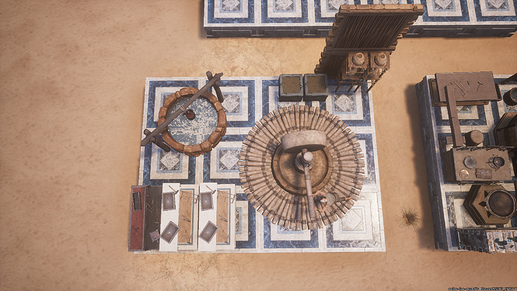

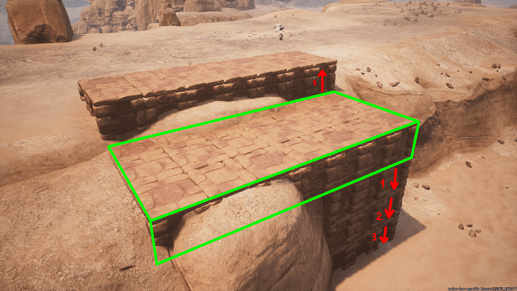
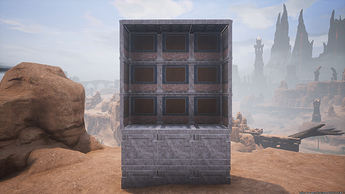




 return to the game, probably a lot of people will notice a decrease in server performance. It’s logical to blame the update, which restores Avatars, but this will not be true.
return to the game, probably a lot of people will notice a decrease in server performance. It’s logical to blame the update, which restores Avatars, but this will not be true.  The decrease in performance will be due to the fact that players suddenly put up an altar. Each altar requires an extension of the base / house / building.
The decrease in performance will be due to the fact that players suddenly put up an altar. Each altar requires an extension of the base / house / building. 

 , look what a building with 6536 building elements looks like. This is madness.
, look what a building with 6536 building elements looks like. This is madness.

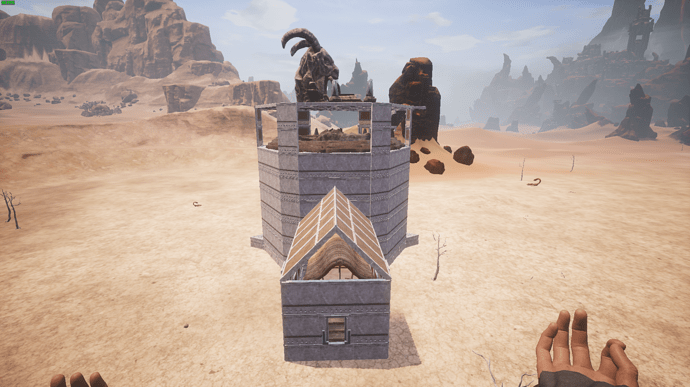




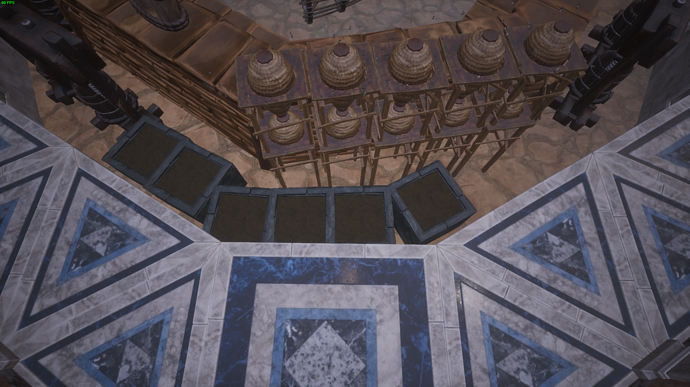


 . I saw a great building on the top of a mountain
. I saw a great building on the top of a mountain  , the first building built by another player and not by me. I decided to explore the building and climbed a lot thinking about what I would find inside. The building was really big and could hold everything, I wondered how many rooms there were.
, the first building built by another player and not by me. I decided to explore the building and climbed a lot thinking about what I would find inside. The building was really big and could hold everything, I wondered how many rooms there were. - I was prepared that I would not find a way out.
- I was prepared that I would not find a way out. 



